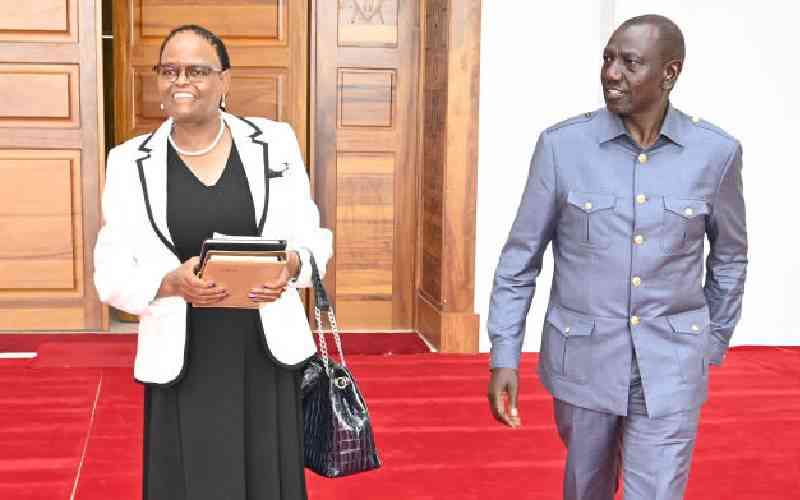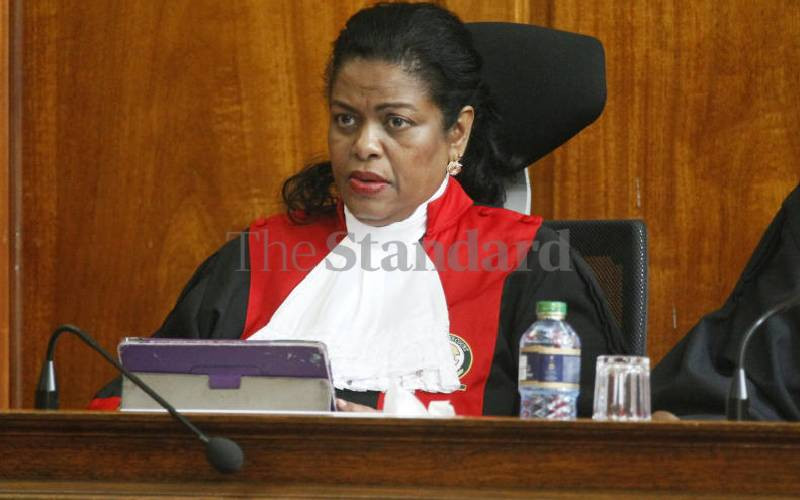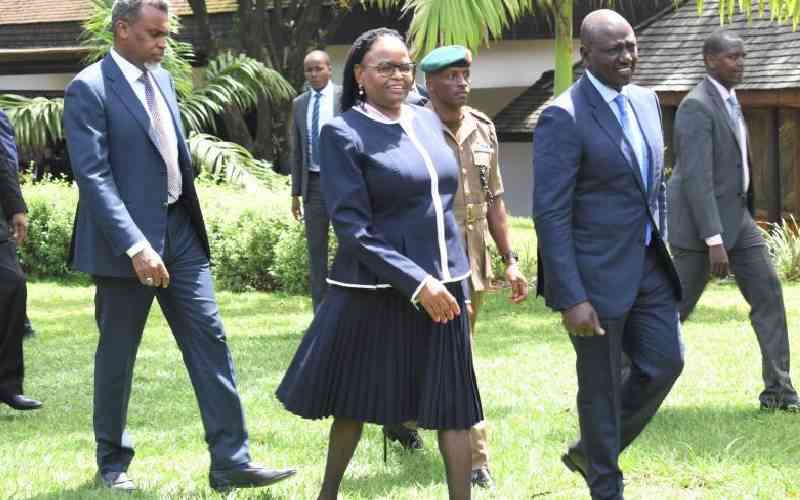After meeting President Uhuru Kenyatta in a political rally, for which he was criticised, Chief Justice David Maraga welcomed the President to his own tuff last week, on the occasion of the state of the Judiciary address. This is the second time Kenyatta was attending this annual ceremony. The President first attended last year, soon after the recrimination-filled elections season.
After the nullification of the presidential election results in 2017, the relationship between the Executive and the Judiciary rapidly deteriorated, with Kenyatta and his Deputy William Ruto, who accompanied the President to the Judiciary function last week, leading in what became an astonishingly vicious attack on the Judiciary in general and the person of Maraga specifically.
While things cooled down eventually, the relationship between the establishment and the Judiciary did not improve and has since been characterised by unexplained budget cuts affecting the Judiciary, delays in giving concurrence to the Judiciary’s projects, and political meddling in the internal affairs of the Judiciary.
The meddling has been directed at the Judicial Service Commission (JSC) with Kenyatta revoking membership of two commissioners, in disregard of their constitutionally-protected security of tenure. Kenyatta first revoked the tenure of Reverend Samuel Kobia in 2015, when he still had almost two years of service left. More recently, Kenyatta revoked the membership of Kipngetich Bett whom he had appointed in 2015, replacing him with former Cabinet Secretary, Felix Kosgey. In both cases, their vacancies were not formally declared and no public explanation was provided regarding the revocation. In 2015, Kenyatta also appointed his political strategist, Winnie Guchu, to the JSC, a choice which communicated that the Judiciary was not expected to act independently. Guchu only left the JSC to resume her former role in the Jubilee campaign secretariat during the 2017 elections.
Political meddling is also evident when the Judiciary elects its representatives to the JSC. When the Court of Appeal re-elected Justice Mohammed Warsame to the JSC, he found his path back blocked because of a new requirement that he needed parliamentary approval before resuming his position. Warsame eventually got back his position only because a judgment of the Court of Appeal authorised him to do so, sidestepping the parliamentary approval and also the refusal by Kenyatta to publish his victory in the Gazette.
It has been claimed that the recent saga involving lawyer Tom Ojienda, one of two representatives of the Law Society on the JSC, is also induced by politics. It seemed strange that a mob appeared at the gate of the Supreme Court to condemn Ojienda’s candidacy, creating a spectacle reminiscent of the election-period activities of the Nairobi Business Community. Also, a virulent social media campaign against Ojienda resembles Jubilee’s electoral activities in 2017. Both events suggest a higher interest in Ojienda’s re-election bid.
While the meddling against the Judiciary reflects a political establishment too insecure to allow other institutions to function independently, it is also a tribute to the constitutional design for the protection of the independence of the Judiciary. Under the previous Constitution, all five members of the JSC were directly appointed by the President or derived membership as a result of holding offices to which they had been appointed by the President. Under those circumstances, the JSC never became a force for protection of judicialindependence, and there never needed to be strife between the executive and the JSC, since the President was the boss.
Under the current Constitution, six of the eleven members of the JSC are elected by stakeholders, with the President only getting to appoint three of the remaining five members. One of the five is the Attorney General and another is the Chief Justice. The fledging tradition is that the three appointed members, and Attorney General, view themselves as representing interests of the state, with the six elected members tending to act independently. Since they are the majority, the elected members now provide the bulwark for the independence of the JSC, and ultimately of the Judiciary itself. The Chief Justice, whose appointment the JSC plays a leading role in, also leans towards the independent members, giving independent actors healthy numbers in JSC.
The ongoing scheming is about changing balance to have more establishment-leaning members on JSC. Since there is no explanation about the frequent replacement of appointed members, one can only guess why the president revokes the appointment of these members prematurely. This probably has to do with dissatisfaction about their suitability to protect the interests of the establishment in the JSC. In the relationship between the executive and the judiciary, there is much to lament about, including the meddling discussed above. However, it is also possible to see the tension as confirmation that the constitutional design regarding judicialindependence was visionary and has so far held out againstan all-emasculating government.
- The writer is the Executive Director at KHRC. [email protected]
 The Standard Group Plc is a
multi-media organization with investments in media platforms spanning newspaper
print operations, television, radio broadcasting, digital and online services. The
Standard Group is recognized as a leading multi-media house in Kenya with a key
influence in matters of national and international interest.
The Standard Group Plc is a
multi-media organization with investments in media platforms spanning newspaper
print operations, television, radio broadcasting, digital and online services. The
Standard Group is recognized as a leading multi-media house in Kenya with a key
influence in matters of national and international interest.
 The Standard Group Plc is a
multi-media organization with investments in media platforms spanning newspaper
print operations, television, radio broadcasting, digital and online services. The
Standard Group is recognized as a leading multi-media house in Kenya with a key
influence in matters of national and international interest.
The Standard Group Plc is a
multi-media organization with investments in media platforms spanning newspaper
print operations, television, radio broadcasting, digital and online services. The
Standard Group is recognized as a leading multi-media house in Kenya with a key
influence in matters of national and international interest.









